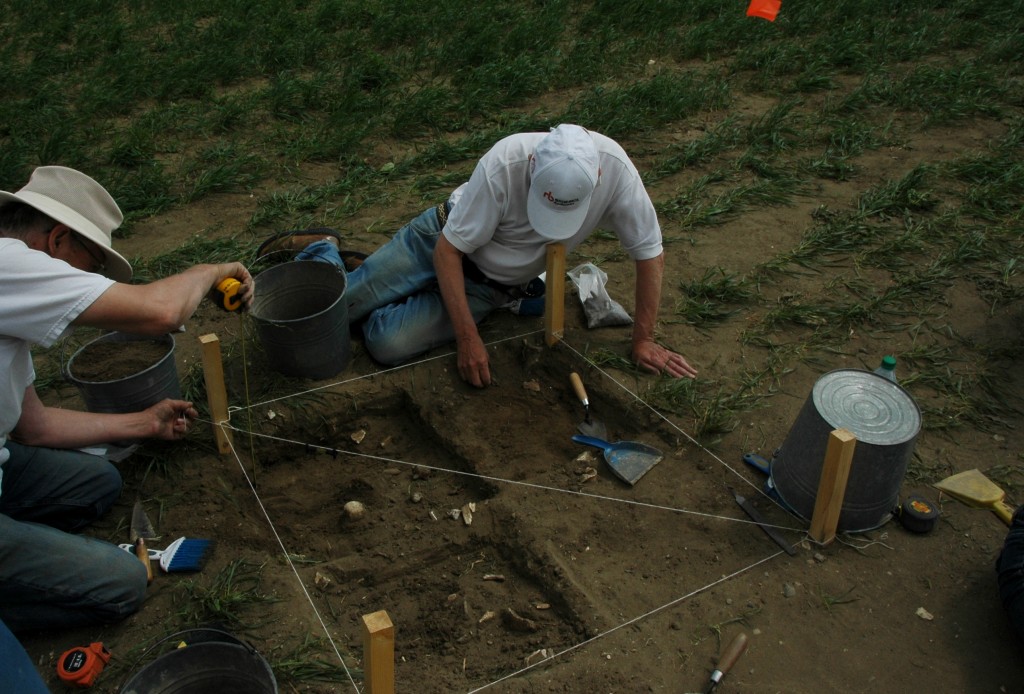Layers of Culture in Ogema
It might sound strange to ask the question, what do 9000 year-old bison bones, handmade Italian pizza and passenger trains have in common? But the answer, “you can find them all in Ogema” makes sense to anyone who was in that corner of the province this past weekend.
Ogema is usually known for its pioneer and settler history, since it is home to the Deep South Pioneer Museum and the Southern Prairie Railway. However, from July 3rd-6th, a whole new level of Ogema’s past was unearthed. The Saskatchewan Archaeological Society presented a public excavation of the Farr Site just a few kilometres from the town of Ogema.
At the same time as the dig was going on, Ogema was celebrating its 101st Agricultural Fair on Saturday, July 4th and its Museum Day on Sunday, July 5th. Both the fair and the museum speak to the deep pioneer roots of this farming community. As well, the Southern Prairie Railway train chugged along the tracks, visible from the dig site. This resurrection of what used to be common on the prairies – passenger train travel – is an example of cultural tourism. Main Street Ogema was thronged with people visiting the local ice cream shop and the Italian pizzeria, indicative of 21st century culture. Meanwhile, at the dig site, the fierce prairie wind blew as participants scraped away thousands of years’ worth of soil, unearthing processed bison bones and projectile points dating from about 9000 years ago, identifying the site as part of the Cody Complex and potentially marking it out as one of the oldest excavation sites in Saskatchewan.

A steam-powered tractor evokes pioneer culture at the Deep South Pioneer Museum Day parade. July 5, 2015. Photo: Kristin Catherwood
The Farr Site is on the northern slope of a hill which affords a stunning view of the surrounding countryside, and its cultural markers. To the right there was a decaying homestead, bookended by a barn with a missing roof. Just down the dirt road from the dig site, there were the ruins of the former Ogema Wheat Pool elevator, or part of it, turned upside down in a field, while a van spray painted with “Ogema” and “Riders” stood sentinel in front. Further down from the site in the opposite direction, modern farm equipment reminded us that this land, which has provided a livelihood for thousands of years, continues to provide one in a completely different way. Meanwhile, at the Deep South Pioneer Museum just a few kilometres away, there was a parade of antique tractors, one a steam-powered tractor from 1911. All of these images are cultural ones, from the 9000 year old spear points to the 21st century farm equipment. All of them tell us something about the culture of southern Saskatchewan – the many layers of culture, both tangible and intangible, that reside in any one place.
Ogema is not unique in this regard, though last weekend presented a unique opportunity to witness all of these layers intermingling. Each and every place has its own layers of culture. Take a look around at your own community and see if you can identify the different cultural layers, past and present, that contribute to the unique cultural map of your place.



